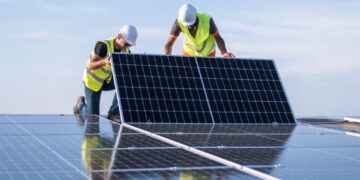The total installed global hydropower capacity increased by 1.2 per cent by the end of 2019, a slight decline in the five-year annual growth rate of 2.1 per cent but still a positive direction for the industry according to a recent report by the International Hydropower Association, IHA.
The publication, the ‘2020 Hydropower Status Report’, found that many elements of the global hydropower infrastructure were relatively unaffected by the spread of Covid-19.
The IHA, however, noted that hydropower facilities tied to long-term power purchase agreements were unaffected by this short-term change, highlighting the relative stability of hydropower in this context.
This stability is also set against a backdrop of increasing hydropower production in general.
It noted that in 2019, hydropower plants produced 4,306 TWh of electricity, the most of any renewable energy source over a single year in recorded history.
Furthermore, there has been significant growth in regions with emerging energy infrastructure.
Over the last decade, hydropower capacity in Africa has grown at an annual rate of 4.4 per cent, significantly higher than the total global figure.
With just 11 per cent of this capacity utilised, the IHA is optimistic about the long-term future of hydropower on the continent, and the potential of the energy source to pre-empt future disruptive events.
“The sector is undergoing a huge involuntary transformation which can be shaped for a more sustainable future,” wrote IHA president Roger Gill in the report’s foreword.
“Nonetheless this report highlights the relative stability, resilience and reliability of the hydropower sector.
“The crisis has again showed that preventing an emergency is far better than responding to one. The events of the past few months must be a catalyst for stronger climate action, including greater development of sustainable hydropower.”
Despite these positive elements, the report highlights a number of challenges ahead for the hydropower industry that suggest the sector is not as resilient as many would like to think.
The report notes that hydropower capacity needs to grow by 2 per cent year-on-year to meet the Paris Climate Goals, and the decline in new installations in 2019 is a cause for concern on this front.
In more short-term matters, the Covid-19 pandemic may not have affected raw hydropower production, but the economic disruption it has left in its wake has had an impact on confidence in hydropower.
An IHA survey found that just 56 per cent of respondents, senior managers or industry leaders within the sector, were confident that their companies’ hydropower revenues would grow over the next one to three years, a significant decline from the 77 who were confident of such growth in 2018, prior to the pandemic.
As a result, the main challenge facing the hydropower sector may not be one of economic viability or infrastructure development, but social confidence, and convincing investors and influential actors of the long-term potential of the energy source.
Unsurprisingly, the IHA is eager to see the sector rebuild this confidence over time.
“Covid-19 has demonstrated the resilience, reliability, and flexibility of hydropower at a time of global crisis,” wrote the IHA in its report. “Due to successfully implementing business continuity plans, hydropower operators have helped ‘keep the lights on’ for essential sectors of the economy.
“In addition to continuing to provide energy and water services to local communities, there have also been inspiring stories emerging from IHA’s members from across the globe.
Hydropower utilities and manufacturers have been securing energy, providing relief to customers, donating medical supplies, and offering support to vulnerable groups.”























